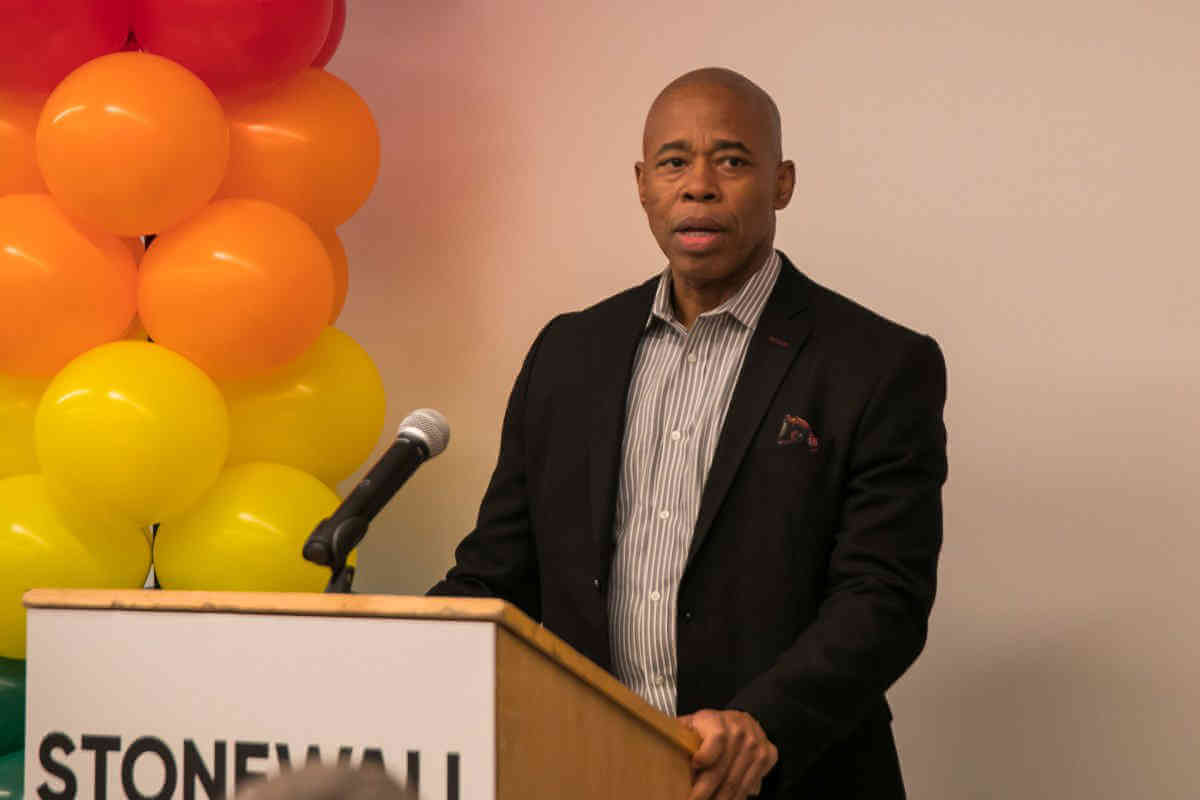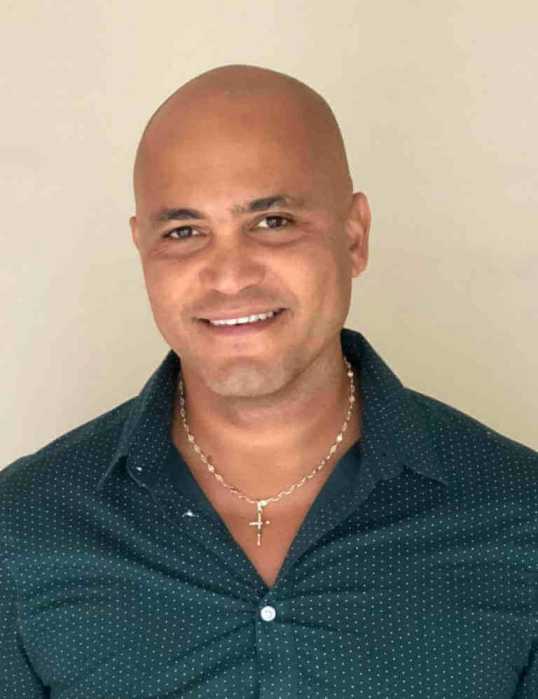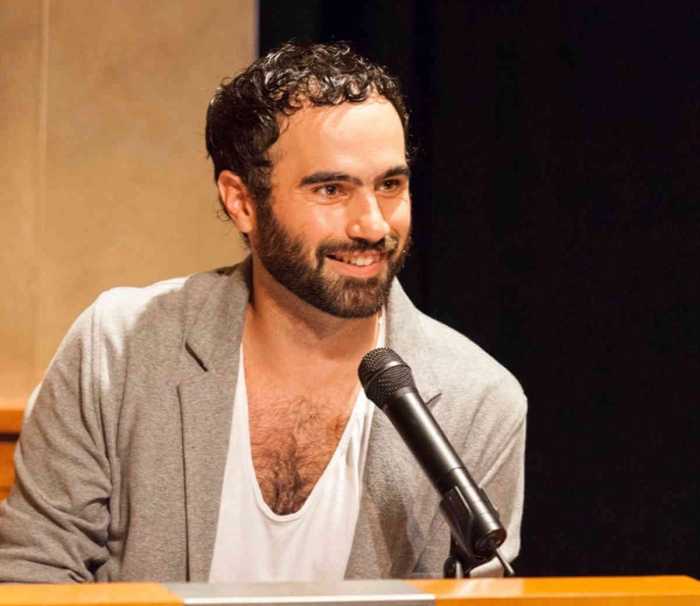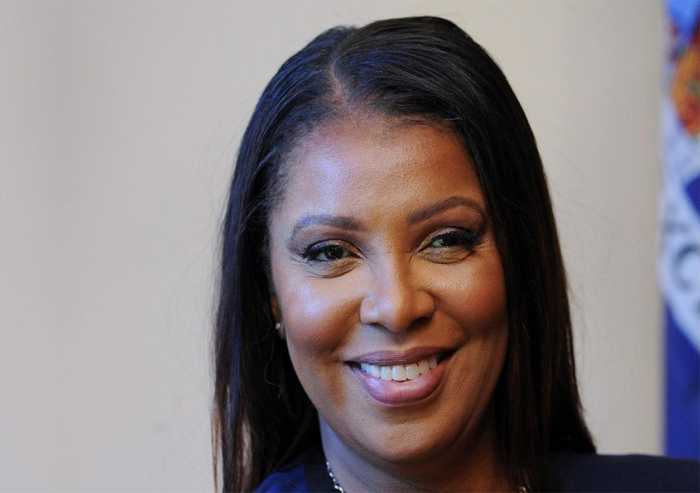A feel-good moment marking the opening of the city’s first LGBTQ-friendly affordable senior housing development took a wild turn when Brooklyn Borough President Eric Adams took the podium, expressed discontent about the building’s racial makeup — an observation at odds with its actual demographics — invoked slavery, and predicted that the residence could lead to trouble in the neighborhood.
The beep’s snippy comments, obtained by Gay City News via an audio recording, were made during Advocacy & Services for LGBT Elders’ (SAGE) December 17 ribbon-cutting ceremony for Stonewall House, a newly-erected residential building at 112 St. Edwards Street on land that also contains NYCHA’s 75-year-old Ingersoll Houses.
BFC Partners and SAGE partnered on the project as part of the NextGeneration NYCHA, which entails putting infill housing on NYCHA property.
Some of Adams’ comments were first reported by the New York Post.
Stonewall House is now home to seniors 62 years and older, 77 percent of whom are people of color. All residents have incomes below 50 percent of the area’s median household income, 25 percent of the apartments were set aside for formerly homeless seniors, and 54 of the 145 units were reserved for residents of NYCHA or those on the waiting list for city public housing.
Yet from the get-over of his remarks, Adams griped that he is “concerned about the diversity” in the new development and said nearby residents have complained that Stonewall House is a “pretty building on NYCHA property.”
“I don’t want to see beautiful floors like this and lead paint over there,” he said. “I don’t want to see rodents over there and comfort here.”
He did not mention that many incoming residents are arriving from NYCHA apartments.
According to SAGE, less than 60 percent of the residents of Stonewall House identify as LGBTQ, though the building did not — and could not legally — screen potential residents based on sexual orientation or gender identity or ask for such information on applications.
The borough president segued from his comments about diversity into a discussion about slavery.
“I think about Frederick Douglass and the conversation about fighting for the independence of America,” Adams said. “He said ‘the arrogance of that those want me to fight for independence when I’m still a slave.’ I can’t celebrate a building that is not inclusive.”
Adams also suggested that the influx of neighborhood newcomers into a newly constructed building would fuel problems with NYCHA residents in the neighborhood, saying, “If you have a body of people over there that feels as though this place here is not for them, we are going to have incidents in this community that will be disruptive.”
He added, “Somehow, we got to figure this out. Somehow.”
What exactly has to be figured out was left to the imagination, but the borough president’s remarks came at a time when gentrification has gripped communities across the city, especially neighborhoods that traditionally have housed people of color — such as Fort Greene, where the Ingersoll Houses and Stonewall House are located. Gentrification is a sensitive, even hot button talking point that resonates especially with communities negatively impacted by luxury developers. And the dilapidated and often dangerously unhealthy conditions at NYCHA facilities across the city have become an exploding scandal.
What’s unclear is why these talking points were brought into a discussion about a property that meets a very high standard for inclusivity and has drawn support from local tenant leaders, including Ingersoll Houses Tenant Association president Darold Burgess, who spoke enthusiastically at the ceremony about the social services the SAGE Center on the building’s ground floor will bring to neighborhood residents, whether or not they live at Stonewall House. Hundreds of NYCHA residents were kept in the loop and consulted on the project throughout its multi-year stages of development.
The borough president’s comments didn’t end there.
Adams, a former cop, wrapped up his brief lecture by continuing to push an us-versus-them narrative, saying that he “didn’t put on a vest for 22 years to protect the children and families of this city to watch us be divided.”
Again, he did not elaborate on how the building would “divide” the community and took no note of the open door policy at Stonewall House’s SAGE Center.
Several ceremony attendees voiced concerns to Gay City News about the potentially unsettling effect the borough president’s warnings about “disruptive” “incidents” and division might have had on Stonewall House residents who were on hand for the ribbon-cutting.
SAGE CEO Michael Adams, when reached for comment, reiterated the innovative nature of the new building and stressed that it “represents the very best of what New York City should be providing in terms of inclusive housing and providing services for low-income New Yorkers.”
He added, “ Stonewall House wants to be a good neighbor in working with the Ingersoll tenants in trying to address the issues that deserve attention.”
Stonewall House is one of the city’s two LGBTQ-friendly senior housing developments spearheaded by SAGE. The other building, Crotona Senior Residences in the East Tremont section of the Bronx, is anticipated to open early in 2020. SAGE told Gay City News in April that Bronx Borough President Ruben Diaz, Jr. — one of Adams’ likely rivals in the 2021 race for mayor — has “passionately supported” that project, for which he has allocated $600,000.
Ironically, the Brooklyn borough president himself, as well as City Councilmember Laurie Cumbo, who represents the Fort Greene district where Stonewall House is located, allocated capital funds for the SAGE Center at Stonewall House. Cumbo attended the ribbon-cutting but did not deliver remarks.
Neither she nor Adams returned calls seeking comment for this story.





































